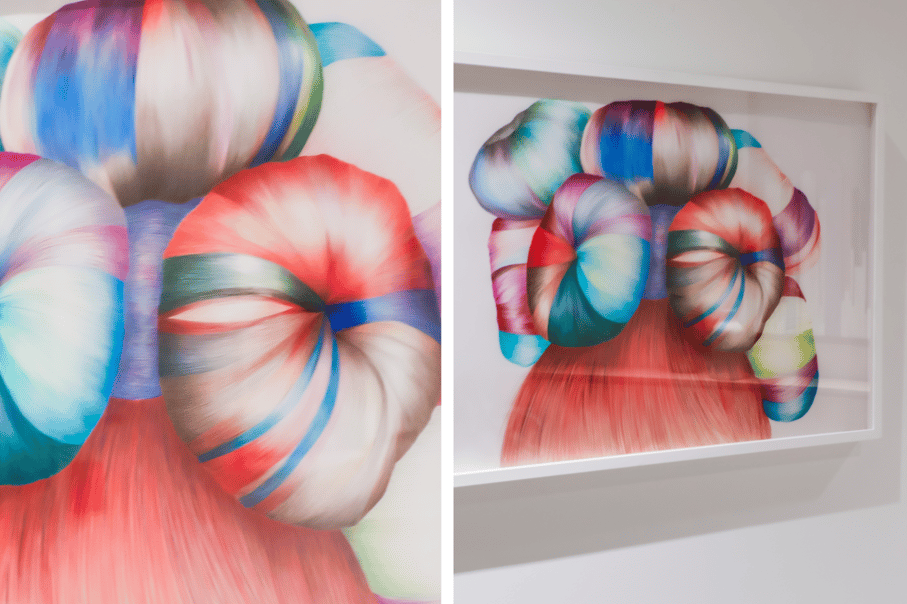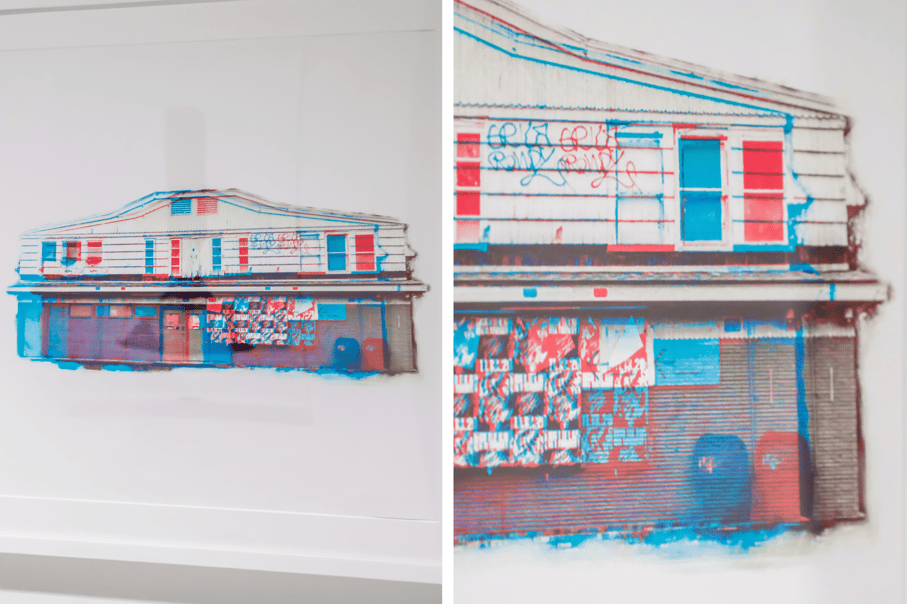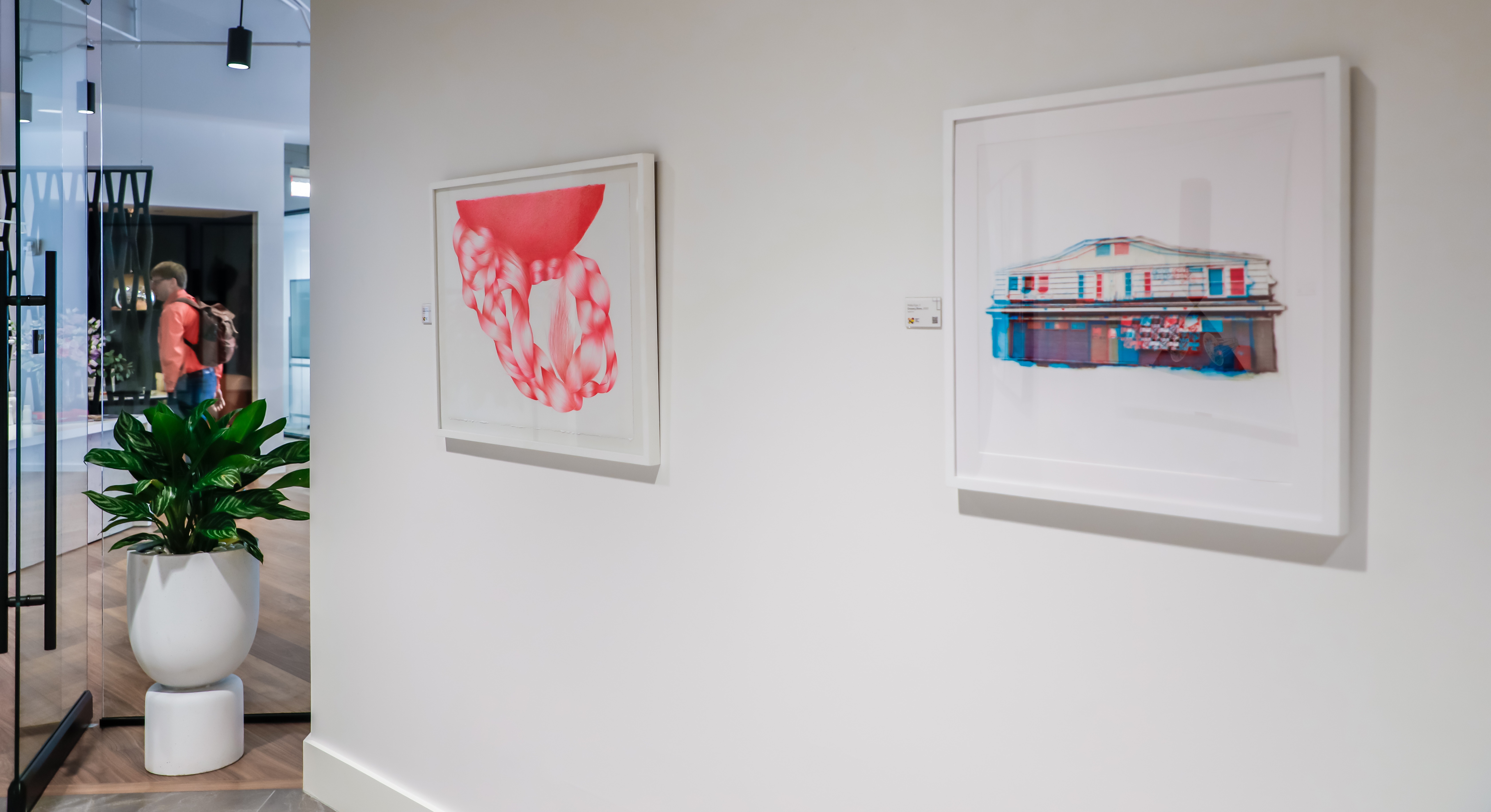The Square's Artist Series with Project Row Houses: A Q&A with Phillip Pyle II and Rabéa Ballin
The Square at Texas Tower is proud to announce its next Artist Series: a collaboration with Project Row Houses to curate pieces from two artists that showcase the spirit of the Black community in Houston. From now until Juneteenth, we invite you to explore the powerful works of two remarkable artists.
As part of this series, we’ve been lucky enough to ask the artists a few questions about their creative processes and the inspiration behind their pieces.
Meeting the Artists
Phillip Pyle II
Phillip, born and raised in Houston's historic Third Ward, is passionate about art's transformative power. His interests include race, humor, advertising, sports, and popular culture. Drawing from mass consumer culture, contemporary advertising, ephemera, historical imagery, and hip-hop, he presents a complex vision rooted in comedy while examining societal values and beliefs.
Rabéa Ballin
Rabéa, born in Germany and raised in Louisiana, resides in Houston as an artist in residence for Project Row Houses. Her work explores overlooked women's histories, identity intersections, and hair politics. As a member of ROUX, an all-female printmaking collective, she explores genealogy and feminism. Project Row Houses offers Rabéa a safe place to work, with mentorship opportunities and study visits.

Rabéa Ballin - "Zenu" 2018 - Prisma Colour on Mylar
Q&A with the Artists
Q: Phillip, can you tell us about your career as an artist and the pivotal moments that have shaped it thus far?
A: My professional artist career began with my artist and resident status at Project Row Houses from 2011 to 2014. During that time, I learned from Rick Lowe how to collaborate with the community on art ideas.
Q: Rabéa, what inspired you to pursue a career in art, and how did your journey lead you to become an artist in residence at Project Row Houses?
A: I was studying to be a Graphic Designer in college when I attended a lecture that changed the way I thought about how I was using my voice. The lecturer was artist Michael Ray Charles, and that pivotal moment is when I decided to change my course. Moving to Houston, going to grad school, and nurturing my relationships with fellow artists has shaped me the most.
Q: Phillip, could you describe the evolution of your artistic style and how you arrived at your current medium of choice?
A: I have been best friends with Photoshop since 1997. So, choosing a medium came naturally.
Q: Rabéa, can you share a memorable experience or project that significantly impacted your artistic perspective?
A: I randomly grabbed a book off the shelves in the Portland, Oregon library… it was James Van Der Zee’s photographs of the Harlem Renaissance. Game changer.
Q: Phillip, how do you engage with your audience, and what kind of reactions do you hope to evoke through your art?
A: I find immense purpose in creating art that agitates, challenges, and disrupts. My work is a means of dismantling oppressive narratives, shedding light on injustice, and provoking conversations that might otherwise go unspoken.

Phillip Pyle, II - "Grocery Store" 2022 - Digital Print
Q: Rabéa, what is your perspective on the importance of art education and mentorship within the artistic community?
A: My perspective on life in general is to learn about things you know nothing about. As an art history professor I hold it in the highest regard knowing that art history truly parallels human history beyond the written word. Mentorship is a way to upbuild, support, and create safe spaces for real dialogue. Find someone who you admire and study their footprint. It may help you figure out where you want to go.
Q: Phillip, how do collaborations or interactions with other artists influence your work?
A: I wouldn’t say I’m influenced by but more inspired to create, knowing that others are doing good work.
Q: Rabéa, what advice would you give to aspiring artists who are trying to find their voice and place in the art world?
A: Visibility is a no brainer. Houston is a Mecca of sorts and if you can familiarize yourself with the dozens of spaces, find your “room”, and find your “why” you are on the right track. You will be surprised what simply asking someone for a studio visit can do for your career. Rejection is also important, no one wants to hear it but it's true. If you have a body of work that you can start applying with… you are in the game. Getting rejected is part of the game. If you never get rejected because you never try- you aren’t in the game. I used to say just “make the work” but if you are serious, you don’t need to be told that. You just need an opportunity to show it.
"I can explain Project Row Houses as a museum that has no walls"
Project Row Houses provided Phillip with an early artist mentorship, guiding and educating him in understanding how social practice art works. He was an artist in residence for 5 years and learned how community and art can come together to collaborate and make a difference. "I explain Project Row Houses as a museum that has no walls," he said.
For Rabéa, Project Row Houses is about friendship, culture and the bonds that tie us together. "I want people to learn that a community is important," she explained. "I wouldn’t be able to do what I do alone, and that works twofold. Extend your ladder to those below you who can use your help. Protect and uplift your tribe."
.png?width=2100&height=1400&name=Untitled%20design%20(9).png)
The Square at Texas Tower, Artist Series 2024
Empowering Artists, Building Communities
Hines has long been involved with Project Row Houses, with former Vice Chairman Hasty Johnson and Managing Director Bert Brown working with the organization on fundraising and housing improvement for years. Through their efforts and those of many other teams across Hines, Project Row Houses has been successfully creating affordable housing in Third Ward—some new, and some through restoration of the area’s iconic row houses—while maintaining the important cultural fabric of a neighborhood with deep, meaningful history.
The Square’s ongoing Artist Series initiative seeks out local artists who are making a difference in the community and have something important to say, allowing their work to be featured in a premier property and expanding their reach and representation. This is just one more way we remain committed to DEI and foster relationships with the people in the areas where we operate.
